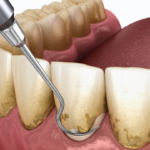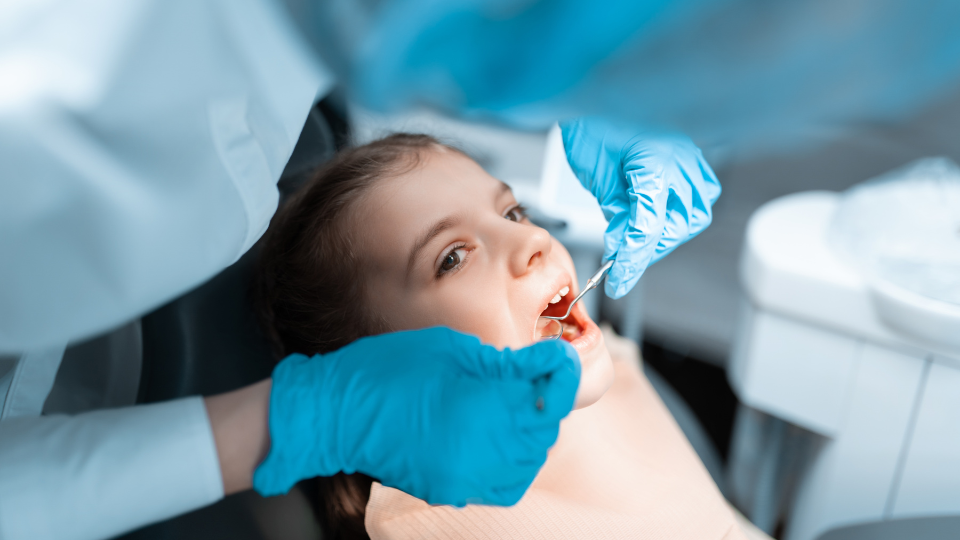How Often Should Kids Go To The Dentist

What is Periodontal Therapy?
October 31, 2023
Meet Dr. Paul Kim: Top Dentist in South Charlotte NC
January 2, 2024How Often Should Kids Go To The Dentist
 Dr. Prashant Rao, DDS, a Charlotte native and NYU-trained dentist, specializes in esthetics, dental implants, and preventative dentistry.
Dr. Prashant Rao, DDS, a Charlotte native and NYU-trained dentist, specializes in esthetics, dental implants, and preventative dentistry.
Key Takeaways:
Importance of Pediatric Dentistry:
Pediatric dentists specialize in the unique dental needs of children, including both baby teeth and permanent teeth.
Timing of First Dental Visit:
The American Academy of Pediatric Dentistry recommends that children have their first dental visit shortly after their first tooth emerges, usually around one year of age.
Regular Dental Visits and Home Care:
Just like adults, children benefit from regular dental check-ups every six months to monitor dental growth, detect early signs of decay, and receive preventive treatments like dental sealants.
Kids’ dental health is just as important as that of adults, so are your kids going to the dentist as often as they should? Find out if your children are on the right track for growing up with healthy dental care habits.
What Is Pediatric Dentistry?
According to the American Academy of Pediatric Dentists, pediatric dentists are specialists in the dental field. They have up to three years of extra training to treat patients’ general and special dental needs from infancy through adolescence.
Pediatric dentists have the specialty knowledge to help kids who have changing dental needs. Unlike adults, kids often have both baby teeth and permanent teeth in their mouths. Therefore, they need a dentist who can care for the unique needs of both types of teeth.
Pediatric dentists have special techniques and tools they can use with their patients to help preserve their teeth. For example, the ICON treatment remineralizes teeth before decay sets in, and dental sealants prevent decay from occurring.
Why Is Pediatric Dental Care Important for Kids?
Everyone needs dental care, even kids who still have baby teeth. Regular visits with a pediatric dentist give kids and their parents the following benefits:
- Healthier teeth from infancy
- Greater ease with learning to speak and eat thanks to healthier teeth
- Fewer dental cavities with regular home care and dental sealants
- Early intervention if problems with tooth growth or decay occur
- Avoid later dental anxiety by building trust with the dentist at an early age
- Instruction in caring for young teeth at home
- Source for custom-fit sports mouthguards to prevent tooth loss from sports injuries
If you want your kids to have healthy teeth after they grow up, start them with regular pediatric visits at an early age.
When Should Your Kids Have Their First Dentist Visits?
So, how soon should you bring your child to their first pediatric dentist visit? It is probably earlier than you think.
The best time for the first dental visit is after you see their first tooth emerge, according to the American Academy of Pediatric Dentistry. This visit will not look like the dental visits you have as an adult.
Instead of cleaning, x-raying, and examining the teeth, the dentist will likely spend much of the time talking to you. You will learn how to care for your child’s growing teeth and signs to look for that indicate emerging issues.
If your child has reached one year of age and hasn’t visited the dentist yet, make an appointment as soon as possible to establish the habit of regular pediatric dental visits for both them and you.
How Often Should Kids Go to the Dentist?
After their first visits to the dentist, how often should your kids return? Talk to your dentist during the first visit. If your child uses a bottle at night or snacks regularly between meals, they may need more frequent visits to watch for cavities. However, most kids can wait until two before starting their twice-a-year dental visits.
Yes, just as you need to see the dentist twice a year, your kids require the same schedule. At these visits, the dentist will check the teeth to ensure they have healthy growth and emerge close to their expected timeline. Usually, the dentist will wait until your child is between four and six to start taking x-rays of their mouth.
As your kids grow, they may also have changing dental needs. The dentist may suggest orthodontic exams around seven to see whether braces will help. Additionally, if your kids play sports, they may get mouthguards from their dentist to protect their teeth. Sealants can prevent early dental decay once your kids get their adult teeth.
Some kids may need more frequent visits, especially if they have conditions that increase their chances of tooth decay, such as being immunocompromised or taking medications that cause dry mouth. Talk to your kids’ pediatric dentist for their recommendation on how often to schedule your kids for visits.
How Can You Help Your Kids Have Healthy Teeth Between Dental Exams
While regular dental visits can help your kids to have healthy teeth, you can also support them at home with good dental hygiene habits.
First, keep their baby teeth clean even before they can brush them on their own. Use a soft cloth or a very soft-bristled brush to clean their baby teeth from the time the first tooth erupts. Once they have two adjacent teeth, start flossing between the teeth when you brush.
By age three, you can guide your child in helping them to brush their own teeth. Turn the event into a daily game and assist them when necessary to ensure that they brush all their teeth. Up until age six, use only a pea-sized amount of fluoride toothpaste for your kids, and don’t let them swallow the toothpaste.
As your kids grow older and have more adult teeth come in, they can switch to an adult toothbrush by around nine or ten years of age. They should also be fully competent to brush and floss their teeth at this age. Ask your kids’ dentist about sealants to prevent cavities, too.
Just like adults, kids need to brush and floss twice a day to maintain healthy teeth and develop the habit of regular home dental care.
Signs That Your Child Might Need to See a Dentist Outside of Regular Exams
Even with excellent home care and regular dental visits, sometimes decay and dental damage can occur. Watch out for the following signs of tooth decay in your kids:
- White spots on the teeth that indicate growing decay, which ICON treatment can reverse
- Not wanting to eat
- Sensitivity or not wanting to eat hot or cold foods
- Light brown or black spots on the teeth, indicating later stages of decay
- Fussiness in infants or toddlers or poor mood in older children
- Lethargy
If you notice any of the above signs of dental decay in one of your kids, schedule a visit with your kid’s pediatric dentist for an evaluation and treatment.
Need a Pediatric Dentist in South Charlotte? Contact Cedar Walk Family and Cosmetic Dentistry
Your next step in getting your children on the road to healthy teeth is to schedule a visit with a pediatric dentist. If your family needs a dentist specializing in treating kids’ needs, please contact us at Cedar Walk Family and Cosmetic Dentistry. We proudly serve the dental needs of families in the South Charlotte area. Trust our team of dentists at Cedar Walk for comprehensive care for all ages.
Practice Recognitions
Recent Posts
- Itchy Gums and Gum Health: Causes, Treatment, and Prevention
- Dental Implants – Complete Guide for Patients in Charlotte
- How Does a Dentist Extract a Tooth? A Step-by-Step Guide
- The 5 Stages of Tooth Decay — and How to Stop It Early
- How to Know If You Need a Root Canal or Endodontic Surgery
- Dental Implants vs. Bridges: Which Tooth Replacement Is Right for You?
- Who is a Good Candidate for Invisalign Treatment?
- Invisalign vs. Braces: Pros & Cons
- What to Expect in the First Four Weeks with Invisalign Treatment
- Can You Whiten Teeth After Icon Treatment?




